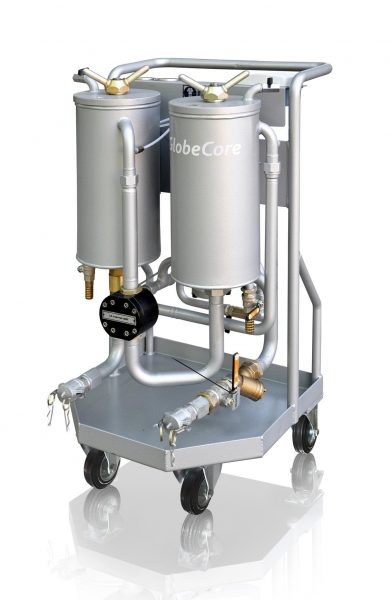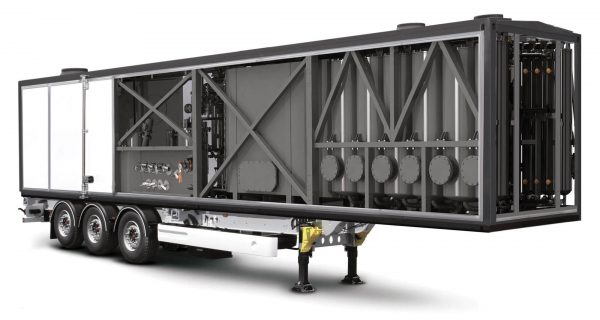Oil Processing methods and equipment
Oil processing is the best way to save money on purchasing new oil. Experience indicates that regular oil processing prolongs the life of oil and oil-filled equipment. Below we examine the basic techniques of oil processing and equipment.
Oil processing by sedimentation
This method is suitable for oil that has a low degree of contamination (with solid particles and water). Oil is placed in a special sedimentation tanks for a few hours. Sludge, dust, metal particles and water will eventually sink to the bottom of the tank, whence they are removed through a drain valve. The main disadvantage of sedimentation is in its limited application and long duration (in some cases, settling can last more than 10-20 hours).
Oil processing by centrifugation
Historically, the first methods of oil processing were based on physical phenomena. One of the methods of processing liquids to remove suspended particles and water uses centrifugal effects. Centrifugation also has its limitations. It is only usable when water in the oil is emulsified and the specific weight of solid impurities exceeds the specific weight of processed oil. It cannot remove dissolved moisture, gases and various fibers, and would require additional processing for complete cleaning.
The equipment for centrifugal oil filtration is centrifuges, also known as separators
Oil Filtration
The use of barriers to capture impurities from the oil is called filtration. Stationary filters process the oil directly in the system. Filter presses process the oil drained from equipment. They consist of frames and plates, with filter media in between.
The main disadvantages of filter presses are leaks which cause oil oxidation; they also need frequent replacement of filter elements and have a relatively low oil reclamation capacity
Coagulation
Coagulation is used when the processed oil contains a large number of small mechanical impurities. It is performed by introducing coagulants. These enlarge the impurities in the oil, then the large particles are removed by sedimentation or filtration.
Evaporation
Evaporation is used to remove moisture from oils. The principle of this process is based on the difference between boiling temperatures of oil fractions and water. The oil is heated to a temperature at which moisture evaporates. Then the evaporated moisture is removed through condensation. The efficiency of oil processing through evaporation depends on the conditions: temperature and pressure.
Also, water can be removed by air dehydrators, which force warm dry air into the oil to extract the moisture.
Electrostatic oil processing
The electrostatic method of oil processing employs special electrodes to create an electric field. When the processed oil passes through this field, charged particles are attracted to the electrodes, and the neutral particles settle on corrugated paper located between the electrodes. Paper distorts the electric field, so neutral particles contact it at the points of greatest tension.
The particles (coal, non-ferrous metals, iron, etc.) in oil receive a positive or negative charge, and are attracted to the electrode with the opposite charge. The main disadvantage of this approach is the need for frequent cleaning of the electrodes. Also, it is recommended to pre-dry the oil to reduce water content to 500 ppm (500 g / t) to increase efficiency of the electrostatic process.
ADSORPTION PROCESSING
Adsorption treatment is an integral part of any system for industrial oil regeneration. Due to the good absorbing properties not only to water and mechanical impurities are removed, but also acidic components and aging products. In general, not all adsorbents demonstrate the same efficiency, and the specific material is selected individually according to specific type of contamination.
Adsorption occurs when oil passes through columns filled with absorbing material. A certain limitation of this method is the need to change the adsorbent when it becomes saturated with impurities, or to reactivate it. This problem is solved in the GlobeCore equipment, where reactivation of the adsorbent continues in parallel with oil processing.
Oil processing in vacuum
GlobeCore produces the CMM units for vacuum processing of oil. This equipment removes dissolved gases and moisture from the oil, and achieves the following results:
- moisture content by weight below 0,001% (10 ppm);
- volumetric gas content below 0.1%;
- content of solid impurities below 8 ppm;
- 5 μm filtration fineness.
In addition to industrial oil processing units, GlobeCore also produces other equipment for transformer maintenance processes, such as drying of solid insulation, refilling, evacuation, etc.
Complex oil processing
There is no single way to accomplish oil purification. In practice, the oil always contains impurities of different nature and origin. Therefore, oil processing is complex and is accomplished through several approaches following each other. For example, the solid particles are removed by sedimentation or filtration, water and gases by high temperature and high vacuum, and aging products are extracted by natural or artificial adsorbents.
GlobeCore produces compact and mobile oil processing plants for complete oil purification and recovery, designed for processing rate required by the customer.


 CMM-4,0F Oil filtration ...
CMM-4,0F Oil filtration ... CMM-12R Oil Regeneration ...
CMM-12R Oil Regeneration ...